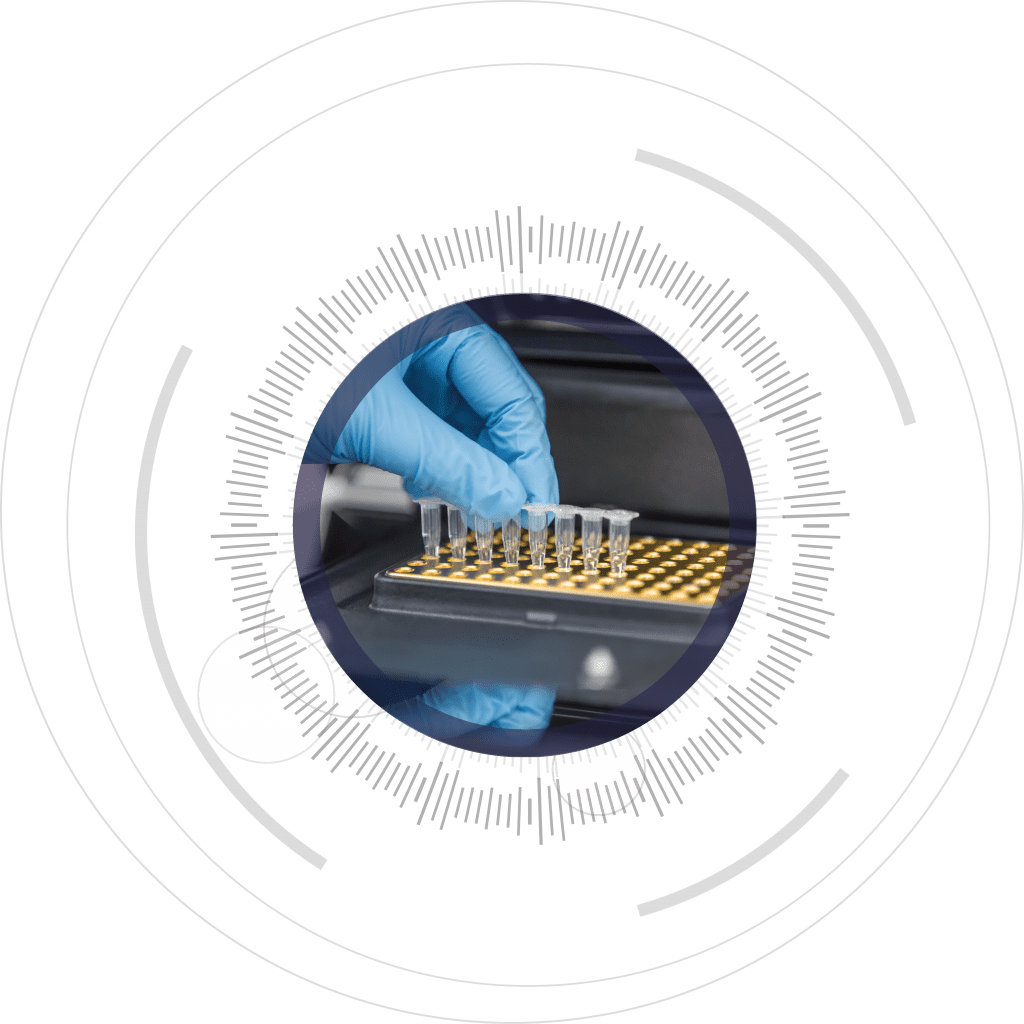OUR TECHNOLOGY
Next Generation Sequencing (NGS)
A new method in genome/ DNA sequencing, with improved accuracy and speed.


Next generation sequencing (NGS) is a new method in genome/ DNA sequencing, with improved accuracy and speed. NGS is used to examine and detect DNA mutations, copy number variations and gene fusions across the genome. In most cases, cancer usually involves mutations in multiple genes. Therefore, looking at single gene mutation is often insufficient for targeted therapy.
Clinical annotation of an entire gene panel with NGS allows assessment of multiple parameters concurrently, enabling highest effectiveness and efficacy in cancer treatments[3].
How can NGS Help?
NGS is able to detect ALL known variants and any actionable gene mutations (with established targeted therapy drug available). It helps to:
• Avoid unnecessary ‘trial and error’ of medication, unnecessary cost and waste of time trying to find the drugs that work
• Identify ‘drugg-able’ mutations and treat with the right drug
• Detect genetic changes with high sensitivity (>99% on targets) and accuracy (100% coverage)
• Monitor disease progression through retrievable personal database in Oncode
• Identify family risk for cancers if indicated
References
1. Lovly, C., Berger, M. & Vnencak-Jones, C. (2016). Circulating tumor DNA. My Cancer Genome.
2. National Cancer Institute (2017). Liquid biopsy: Using DNA in blood to detect, track, and treat cancer. National Cancer Institute.
3. Behjati, S., & Tarpey, P. S. (2013). What is next generation sequencing? Archives of Disease in Childhood. Education and Practice Edition, 98(6), 236–238.
4. The Tayside Centre for Genomic Analysis (2014). Fragment analysis.
5. MRC-Holland-MLPA- an introduction.
OUR TECHNOLOGY
Next Generation Sequencing (NGS)
A new method in genome/ DNA sequencing, with improved accuracy and speed.


Next generation sequencing (NGS) is a new method in genome/ DNA sequencing, with improved accuracy and speed. NGS is used to examine and detect DNA mutations, copy number variations and gene fusions across the genome. In most cases, cancer usually involves mutations in multiple genes. Therefore, looking at single gene mutation is often insufficient for targeted therapy.
Clinical annotation of an entire gene panel with NGS allows assessment of multiple parameters concurrently, enabling highest effectiveness and efficacy in cancer treatments[3].
How can NGS Help?
NGS is able to detect ALL known variants and any actionable gene mutations (with established targeted therapy drug available). It helps to:
• Avoid unnecessary ‘trial and error’ of medication, unnecessary cost and waste of time trying to find the drugs that work
• Identify ‘drugg-able’ mutations and treat with the right drug
• Detect genetic changes with high sensitivity (>99% on targets) and accuracy (100% coverage)
• Monitor disease progression through retrievable personal database in Oncode
• Identify family risk for cancers if indicated
References
1. Lovly, C., Berger, M. & Vnencak-Jones, C. (2016). Circulating tumor DNA. My Cancer Genome.
2. National Cancer Institute (2017). Liquid biopsy: Using DNA in blood to detect, track, and treat cancer. National Cancer Institute.
3. Behjati, S., & Tarpey, P. S. (2013). What is next generation sequencing? Archives of Disease in Childhood. Education and Practice Edition, 98(6), 236–238.
4. The Tayside Centre for Genomic Analysis (2014). Fragment analysis.
5. MRC-Holland-MLPA- an introduction.
